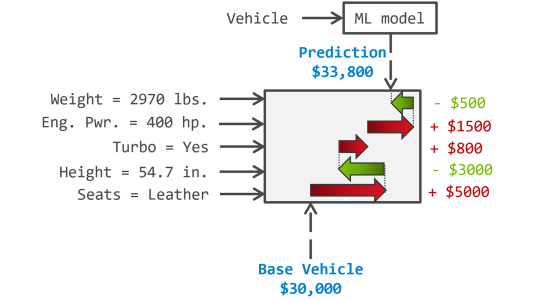
Scientists at the U.S. Department of Energy’s (DOE) Argonne National Laboratory have developed an explainable machine learning model to better estimate the manufacturer’s suggested retail price (MSRP). Automotive companies have been under increasing pressure from customers and regulatory agencies to improve vehicle energy consumption, while at the same time minimize the impact on price to the customers. Besides, the U.S. DOE’s Vehicle Technologies Office (VTO) aims to develop sustainable, affordable, and efficient technologies for transportation of goods and people. To maximize investments in advanced transportation component technologies and powertrains, a thorough understanding of MSRP is critical.
“Machine learning offers new opportunities to understand the contributions of new technologies on vehicle price, across vehicle manufacturers and vehicle classes, but also over time,” Moawad said. “More specifically, explainable machine learning was used to reveal previously overlooked features impacting MSRP.”
“Since cost information is highly proprietary, MSRP has been historically calculated using a bottom-up approach based on individual component costs estimated through vehicle teardown,” said Ayman Moawad, principal systems analysis engineer at Argonne. “That methodology is expensive, time-consuming, and does not take into account the large gaps in pricing strategies across automotive manufacturers, vehicle classes, or market segments.”
To address those issues, a new methodology based instead on a top-down approach has been developed: from vehicle retail price (MSRP) estimation using machine learning techniques down to component price attributional effects on vehicle MSRP by leveraging game theory concepts of coalition and cooperation. This data-driven approach required the development of a new database that includes more than 65,000 vehicles covering 30 years of data and hundreds of vehicle specs.
“Machine learning offers new opportunities to understand the contributions of new technologies on vehicle price, across vehicle manufacturers and vehicle classes, but also over time,” Moawad said. “More specifically, explainable machine learning was used to reveal previously overlooked features impacting MSRP.”
Recent research in model interpretability allowed to leverage machine learning methods to build a vehicle price model but also involve cooperative game theory to explain the contribution of individual components to the vehicle price. Researchers are now able to extract component price values at market level without the need to collect inaccessible component cost data.
“The research will help a large number of stakeholders quantify the techno-economic impact of different technologies across vehicles and time,” said Aymeric Rousseau, manager of the Vehicle and Mobility Systems group. “For example, while DOE’s VTO and other research organizations will be able to maximize the impact of their R&D investments, the new capability will also benefit manufacturers to advance their understanding of product and component pricing amongst competitors”.
The project involved multiple researchers within Argonne as well as insight from Wei Biao Wu, a University of Chicago Department of Statistics professor. The Vehicle Technologies Office (VTO) of the DOE’s Office of Energy Efficiency & Renewable Energy (EERE) provided funding.